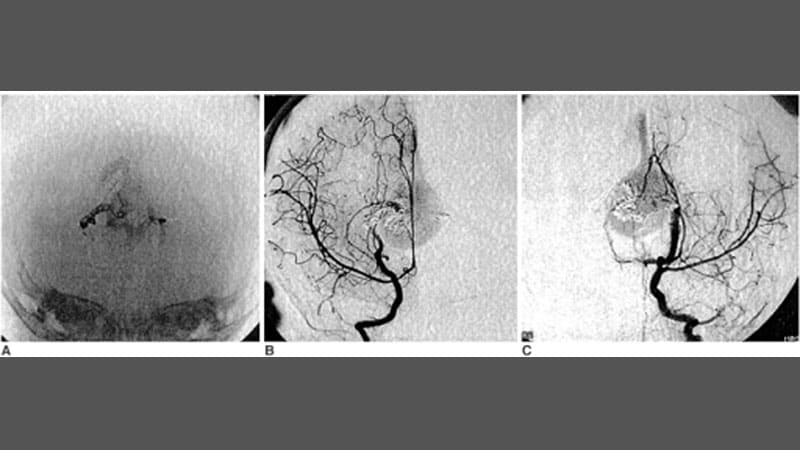First In Utero Cerebrovascular Surgery Success
Core Concepts
Successful in utero surgery for cerebrovascular malformation.
Abstract
In a groundbreaking in utero surgery, researchers repaired a vein of Galen malformation, preventing heart failure and brain injury in a fetus. The surgery, performed at 34 weeks' gestational age, led to significant improvements in cardiac output and brain health post-birth. The innovative approach aims to transform high-risk fetuses into healthy babies, potentially revolutionizing treatment for this condition.
Key Highlights:
Repair of vein of Galen malformation in utero
Improved cardiac output and brain health post-birth
Innovative approach to prevent heart failure and brain injury
Potential for transforming high-risk fetuses into healthy babies
First In Utero Cerebrovascular Surgery Success
Stats
"Vein of Galen malformation occurs in around one in every 60,000 births."
"Babies with the malformation can have twice the total cardiac output of the body."
"Babies with the malformation have a high mortality rate without expert care."
Quotes
"The hope is that this baby, and others with this condition who receive this in utero surgery in future, will go on to have a normal life." - Darren B. Orbach, MD, PhD
"The positive hemodynamic changes that they observed in utero and after birth are really encouraging." - Colin Derdeyn, MD
Key Insights Distilled From
by Sue Hughes at www.medscape.com 05-04-2023
https://www.medscape.com/viewarticle/991612
Deeper Inquiries
How can this innovative in utero surgery impact the future of treating cerebrovascular malformations?
The innovative in utero surgery for repairing cerebrovascular malformations, such as the vein of Galen malformation, has the potential to revolutionize the treatment of such conditions. By intervening before birth, this surgery can prevent the life-threatening complications that often arise soon after delivery, such as heart failure and severe brain injury. This approach allows for early correction of the abnormal blood flow patterns, reducing the risks associated with postnatal interventions. If successful, this technique could lead to improved outcomes for infants with cerebrovascular malformations, offering them a chance at a normal life without the need for extensive postnatal treatments.
What are the potential risks and limitations of performing such surgeries in utero?
While in utero surgeries for cerebrovascular malformations hold great promise, they also come with inherent risks and limitations. One of the primary risks is the potential for complications during the procedure, given the delicate nature of operating on a fetus. There is also a risk of premature birth following the surgery, which can introduce additional challenges for the newborn. Furthermore, the long-term effects of in utero interventions on the child's development and health need to be carefully monitored and studied. Additionally, the limited number of cases and the complexity of the procedure may pose challenges in standardizing the technique and ensuring consistent outcomes across different medical centers.
How might advancements in fetal surgery techniques influence other areas of pediatric medicine?
Advancements in fetal surgery techniques, as demonstrated by the in utero repair of cerebrovascular malformations, have the potential to influence various areas of pediatric medicine. Firstly, these advancements could pave the way for the development of new approaches to treating congenital conditions that were previously considered untreatable before birth. This could lead to improved outcomes for a wide range of fetal anomalies, not just limited to cerebrovascular malformations. Additionally, the expertise gained from performing complex fetal surgeries could enhance the overall capabilities of medical teams in managing high-risk pediatric cases postnatally. The interdisciplinary collaboration required for successful fetal surgeries can also foster innovation and knowledge-sharing across different specialties, benefiting the field of pediatric medicine as a whole.
0
More on Healthcare
